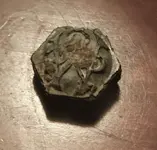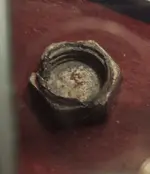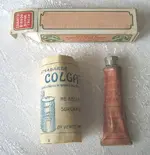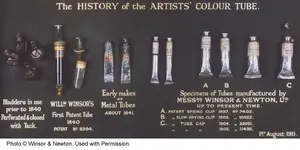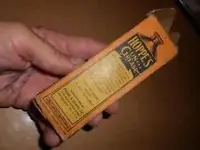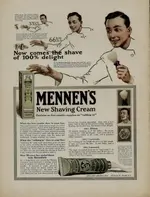You are using an out of date browser. It may not display this or other websites correctly.
You should upgrade or use an alternative browser.
You should upgrade or use an alternative browser.
Found at WW1 traing camp.
- Thread starter Jmann69
- Start date
DCMatt
Gold Member
- Joined
- Oct 12, 2006
- Messages
- 10,472
- Reaction score
- 13,785
- Golden Thread
- 0
- Location
- Herndon Virginia
- Detector(s) used
- Minelab Equinox 600, EX II, & Musketeer, White's Classic
- Primary Interest:
- Metal Detecting
Upvote
0
surf
Silver Member
- Joined
- Jan 10, 2013
- Messages
- 2,832
- Reaction score
- 1,458
- Golden Thread
- 0
- Detector(s) used
- seeing eye shovel
- Primary Interest:
- Other
Hey Jmann,
Thanks for the good photos. Above's another possibility.
"According to this website, collapsible metal tubes were first patented in the U.K. and in the U.S. back in 1841. They were originally used to hold artist’s paint, making it easier for artists to travel with their art supplies and more easily do paintings on location in villages and fields. The Johnson brothers were innovators, and they seized on the idea of using collapsible tubes for Zonweiss, to give consumers more convenience and further ease of use.
There was a collapsible tube manufacturer in New Brunswick, New Jersey – The Consolidated Fruit Jar Manufacturing Company (despite its name, that company also made tins with shaker tops and collapsible tubes.) The Johnson brothers used them as their source — Johnson & Johnson was already buying fruit jars from them to package sterile surgical gauze and dressings, because the fruit jars could be hermetically sealed to keep the contents sterile…" http://www.kilmerhouse.com/2012/05/zonweiss-the-first-toothpaste-in-a-tube/
Here's another:
Upvote
0
nhbenz
Gold Member
- Joined
- Dec 30, 2004
- Messages
- 6,821
- Reaction score
- 6,848
- Golden Thread
- 0
- Location
- Brentwood, NH
- Detector(s) used
- White's Classic SL
White's Surf P.I.
Upvote
0
Similar threads
- Replies
- 3
- Views
- 537
Users who are viewing this thread
Total: 1 (members: 0, guests: 1)
Latest Discussions
-
Spanish Gold Mines in the Sandia Mountains
- Latest: Puff the Tragic Wagon
-
-
-
-

